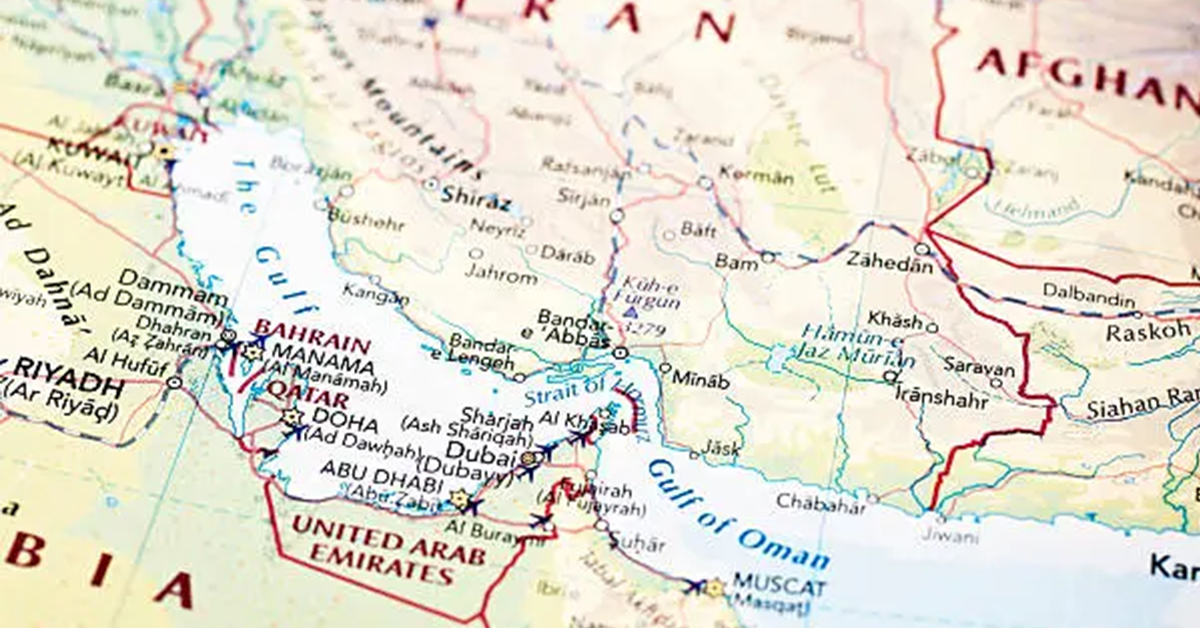4 min read
How Iran Closing the Strait of Hormuz Could Impact the Global Pulp and Paper Industry
ResourceWise
:
Jun 23, 2025 3:27:06 PM

As geopolitical tensions rise in the Middle East, questions around the Strait of Hormuz’s stability have surfaced—raising serious concerns across global supply chains. While most headlines focus on the implications for oil and gas markets, industries like pulp and paper are also vulnerable due to reliance on international shipping, energy-intensive processes, and global raw material trade.
Why the Strait of Hormuz Matters for Global Trade
The Strait of Hormuz, a narrow passage between the Persian Gulf and the Arabian Sea, is one of the world’s most critical maritime chokepoints. It handles over 20% of globally traded oil, nearly one-third of liquefied natural gas (LNG), and 2-3% of global container traffic, including key transshipment hubs like Jebel Ali (UAE) and Khor Fakkan. A closure, whether temporary or prolonged, or disruptions from regional conflicts, would disrupt global logistics, spike energy prices, and affect non-energy commodities like pulp and paper.
For the pulp and paper industry, which depends on seamless maritime trade for raw materials (e.g., wood pulp, chemicals) and finished products (e.g., packaging, printing paper), this presents both direct and indirect risks, from delayed shipments to increased production costs.
Key Impacts on the Pulp and Paper Industry
1. Shipping Disruptions and Rising Freight Costs
If the Strait of Hormuz were to close, major shipping routes would be forced to reroute, most likely around the Cape of Good Hope, adding an estimated 10 to 12 days to each voyage. Beyond extended transit times, vessels operating in the Gulf would face substantial increases in insurance costs, with war-risk premiums for larger carriers.
For pulp and paper companies, these developments translate into significantly higher transportation expenses for raw materials, packaging supplies, and finished products, along with reduced schedule reliability and increased exposure to shipment disruptions.
2. Surging Energy Prices and Production Costs
A Strait closure could push crude oil prices above $100-$150 per barrel and cause LNG prices to soar, as seen with recent Brent crude increases of $10 per barrel since early June 2025 due to the Israel-Iran conflict. Pulp and paper production is energy-intensive, relying on fuel oil, natural gas, or electricity for pulping and processing. Regions dependent on energy imports from the Middle Eastern Gulf (MEG), such as China (90% of Iranian oil via the Strait), India (40% of oil), and Europe (20% of Qatari LNG), would face sharp cost increases.
Higher energy prices would raise operating costs for pulp mills, particularly for virgin pulp production, squeezing margins for producers already grappling with inflation. Facilities without long-term energy contracts could face operational curtailments, while chemical inputs like caustic soda and methanol, often sourced from the MEG, could become costlier or scarce, further disrupting paper production.
3. Supply Chain Disruptions for Raw Materials and Finished Products
The pulp and paper industry relies on globally traded raw materials, with major pulp exporters like Brazil, Canada, Sweden, and Finland supplying importers in Asia (China, India, Japan, South Korea) and Europe. A Strait closure would delay pulp shipments, especially to Asia, where China produces much of the world’s paper. Chemicals and additives, such as those produced in the MEG, are also critical, and disruptions could lead to shortages.
Finished products, including printing paper, tissue, and packaging, would face delays due to container shipping bottlenecks. This could disrupt supply chains for essential goods, such as cardboard for e-commerce or paper bags for food packaging, particularly in import-dependent regions like the MEG, Africa, and Southeast Asia. Manufacturers and buyers may compete for limited shipping capacity, driving up costs and prompting stockpiling to mitigate risks.
4. Trade Realignments and Strategic Sourcing
Continued volatility could reshape global trade dynamics. Buyers in Asia and Europe may shift sourcing to pulp suppliers in North America, Scandinavia, or Latin America to avoid Gulf-based shipping routes. For example, China and India could diversify pulp imports from Canada or Brazil, though higher shipping costs would persist. This could foster new supplier alliances and accelerate investments in operations less exposed to Middle Eastern risks.
In the MEG, countries like Saudi Arabia, UAE, and Qatar, which import pulp and paper products, would face higher costs and delays, potentially spurring local production or alternative sourcing. However, limited pipeline options for non-energy commodities mean rerouting remains challenging, emphasizing the need for strategic supply chain planning.
5. Inflation, Exchange Rates, and Market Behavior
Rising energy, freight, and raw material costs would drive inflation in paper product prices, squeezing discretionary markets like glossy print media while increasing costs for essential categories like packaging and hygiene papers. Exchange rate volatility, particularly for energy-importing countries like India and Japan, could further complicate trade. In response, companies may pass costs to consumers, adjust pricing strategies, or explore recycled fiber to reduce reliance on virgin pulp, though this depends on local recycling infrastructure.
Regions Most Affected
The closure or disruption of the Strait would impact countries across the pulp and paper value chain:
- Middle East Gulf (Saudi Arabia, UAE, Qatar, Kuwait, Iran): These nations rely on the Strait for imports of pulp, paper products, and chemicals. Disruptions would increase costs and delay shipments, affecting local industries and transshipment.
- Asia (China, India, Japan, South Korea): China, the largest paper producer, and India, a growing market, face risks from delayed pulp imports and higher energy costs. Japan and South Korea, reliant on MEG energy, would see production cost spikes.
- Europe (Sweden, Finland, Germany, France): Major pulp exporters like Sweden and Finland would face higher shipping costs to Asia, while energy-intensive mills in Germany and France would contend with rising LNG prices.
- Americas (Brazil, Canada, United States): Pulp exporters would encounter elevated shipping costs and delays to Asia, though minimal direct reliance on the Strait limits some impacts.
- Africa and Southeast Asia (South Africa, Egypt, Indonesia, Malaysia): Import-dependent regions would face higher costs and delays, while exporters like Indonesia would see increased shipping expenses.
Strategic Decision-Making in Uncertain Times
Geopolitical instability underscores the need for resilience in the pulp and paper industry. Companies must adapt by adjusting pricing strategies, diversifying supply chains, or investing in regional production to mitigate risks. Exploring recycled fiber or reshoring supply lines could further enhance stability, but success hinges on accessing timely market intelligence.
At ResourceWise, we empower the pulp and paper industry with actionable data and forecasting tools to navigate geopolitical volatility. Our datasets and expert analysis enable businesses to proactively manage risks, optimize sourcing strategies, and protect margins in an uncertain world.
Explore our suite of pulp and paper solutions to see how ResourceWise delivers advanced analytical models and actionable insights, empowering you to navigate market instability and operational challenges with confidence.




